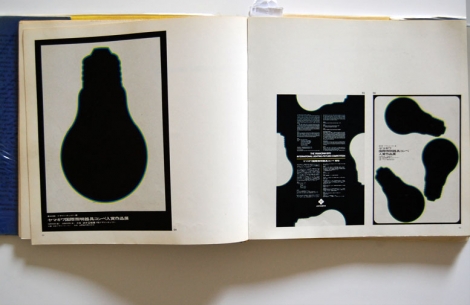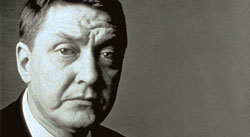Yusaku Kamekura was born on 6 April 1915 in the Japanese province of Niigata. He received his education at a private school that focused on training designers exclusively, the Bauhaus-oriented Institute of New Architecture and Industrial Arts, which was established by Ranahichiro Kawakita. He acquired the fundamentals of Constructivism during this period and remained at the institution until 1935, at which point he graduated.

Kamekura’s objective was to become a graphic designer, a goal that he ultimately achieved. Three years after graduating in 1938, Kamekura secured his inaugural significant position at Nippon Kobo Studio. Nippon Kobo Studio was responsible for the publication of both the Nippon magazine and the Thai newspaper Kaupapu.
During his formative years at Nippon, he commenced work on a series of posters for Nikon, which represented a significant opportunity for a novice designer. He was diligent in his work and participated in numerous social events, including the establishment of the Japan Advertising Arts Club in 1951, the creation of the Graphic ’55’ exhibition in 1955, and many others. His ascension to a position of prominence commenced with his appointment as Managing Director of Nippon Kobo in 1960.
What distinguished Kamekura’s posters was a particular quality. In contrast to the prevailing trends of modernism in Japan at the time, Kamekura adhered to the traditional principles of Japanese design in the creation of his posters, a decision that proved pivotal to his success. In 1956, he was awarded the Membership Prize by the Advertising Art Club Exhibition for his contributions to the peaceful utilisation of atomic energy. Additionally, he employed the use of collage in his work, having been influenced by the Japanese ikebana artist Sofu Tashigahara.
At that time, Japan was undergoing a significant cultural shift, with Western influences becoming increasingly prevalent across various aspects of Japanese life. At the time, Kamekura was engaged in the creation of posters, logos and corporate symbols. He accepted the offer on the basis of his connection to it. He consistently maintained that he was unable to accept an offer from an organisation whose principles were antithetical to his own.
In 1962, he assumed the role of a freelance designer. The pivotal moment in his life occurred in 1964, when he was engaged in the design of posters for the 18th Olympic Games in Tokyo. The design featuring a red sun rising above five Olympic circles was selected over thousands of others due to its simplicity and resonating national background. Additionally, he was the first time in his life to be influenced by modern design principles. His objective was to devise a new national image for Japan, which had suffered significantly in the aftermath of the Second World War. Subsequent to the Olympic Games, Yusaku Kamekura became a globally renowned figure. His career subsequently experienced a significant acceleration. He played an instrumental role in rehabilitating Japan’s global image, and his efforts were duly rewarded.
In 1978, Kamekura was elected chairman of the Japan Graphic Designers Association, an organisation that had published numerous books about renowned Japanese designers. In 1985, he was awarded the Sacred Treasure of the 3rd Order, and in 1991, he was bestowed with the Cultural Personality Honors to the Merit. These accolades contributed to his global recognition. He passed away in 1997.




















